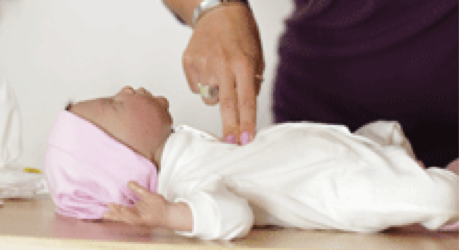Back First Aid Explained
Drowning
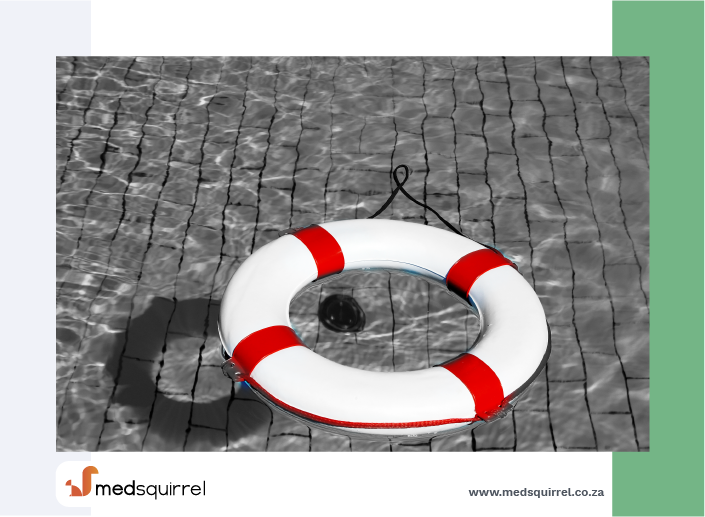
We have selected the following expert medical opinion based on its clarity, reliability and accuracy. Credits: Sourced from the British RedCross. Please refer to your own medical practitioner for a final perspective, assessment or evaluation.
Dealing with drowning
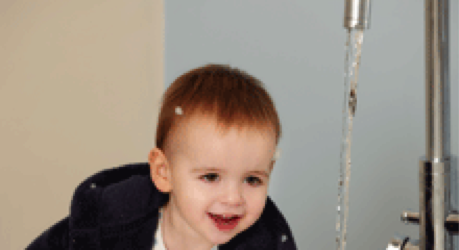
When you hear the word drowning, what is the first thing that springs to mind? The unfortunate plight of passengers on sinking ships, terrifying shark attacks on holiday and being swept to sea by strong currents might not be too far from your mind.
However, it is important to remember you don?t have to be in the middle of the Atlantic or on a beach in Australia to be harmed in this way. Drowning is relatively uncommon but there is a threat when your children are splashing in the paddling pool or sitting in the bath. Never leave your child unattended as even one inch of water can cover a baby?s nose and mouth if they fall forwards.
Familiarise yourself with the steps below
1. Lift your baby out of the water and carry them with their head lower than their chest to reduce the risk of inhaling water.
2. Remove any wet clothing and cover them with a dry towel or blanket.
3. If they are unconscious, open their airway and check their breathing. If they are breathing, put them into the recovery position. If they are not breathing, follow the steps below.
Unconsciousness (not breathing)
For a baby (birth to one)
1. Open their airway by gently tilting back the head and lifting the chin.
2. Give rescue breaths. To do this, place your mouth over their mouth and nose and blow steadily for about one second, until the chest rises. Do this five times.
3. Place two fingers on the centre of their chest and give 30 chest compressions by pressing down about a third of their depth.
4. Give two rescue breaths, followed by 30 chest compressions and continue this cycle for about one minute.
5. Call an ambulance and following the cycle of rescue breaths and chest compressions until help arrives or until the baby starts to breathe again. (See "EMERGENCY NUMBERS" above).
For a child (one to puberty)
1. Open their airway by gently tilting back the head and lifting the chin.
2. Give rescue breaths. To do this, pinch the nose and give rescue breaths by placing your mouth over their mouth and blow until their chest rises. Repeat five times.
3. Place your hand over the centre of the child?s chest and lean over. Give 30 chest compressions by pressing down about a third of the depth of the chest.
4. Give two rescue breaths, followed by 30 chest compressions and follow this technique for one minute.
5. Call an ambulance and following the cycle of rescue breaths and chest compressions until help arrives or until the child starts to breathe again.
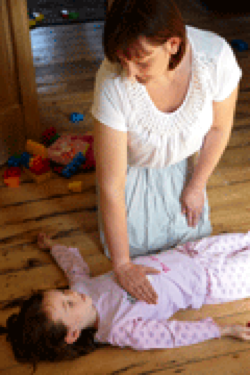
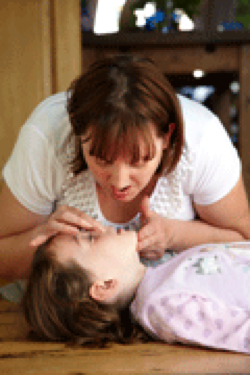
_______________________________________________________________________________________________________________________
Are you a healthcare practitioner who enjoys patient education, interaction and communication?
If so, we invite you to criticise, contribute to or help improve our content. We find that many practicing doctors who regularly communicate with patients develop novel and often highly effective ways to convey complex medical information in a simplified, accurate and compassionate manner.
MedSquirrel is a shared knowledge, collective intelligence digital platform developed to share medical expertise between doctors and patients. We support collaboration, as opposed to competition, between all members of the healthcare profession and are striving towards the provision of peer reviewed, accurate and simplified medical information to patients. Please share your unique communication style, experience and insights with a wider audience of patients, as well as your colleagues, by contributing to our digital platform.
Your contribution will be credited to you and your name, practice and field of interest will be made visible to the world. (Contact us via the orange feed-back button on the right).
Disclaimer:
MedSquirrel is a shared knowledge, collective intelligence digital platform developed to share medical knowledge between doctors and patients. If you are a healthcare practitioner, we invite you to criticise, contribute or help improve our content. We support collaboration among all members of the healthcare profession since we strive for the provision of world-class, peer-reviewed, accurate and transparent medical information.
MedSquirrel should not be used for diagnosis, treatment or prescription. Always refer any questions about diagnosis, treatment or prescription to your Doctor.


